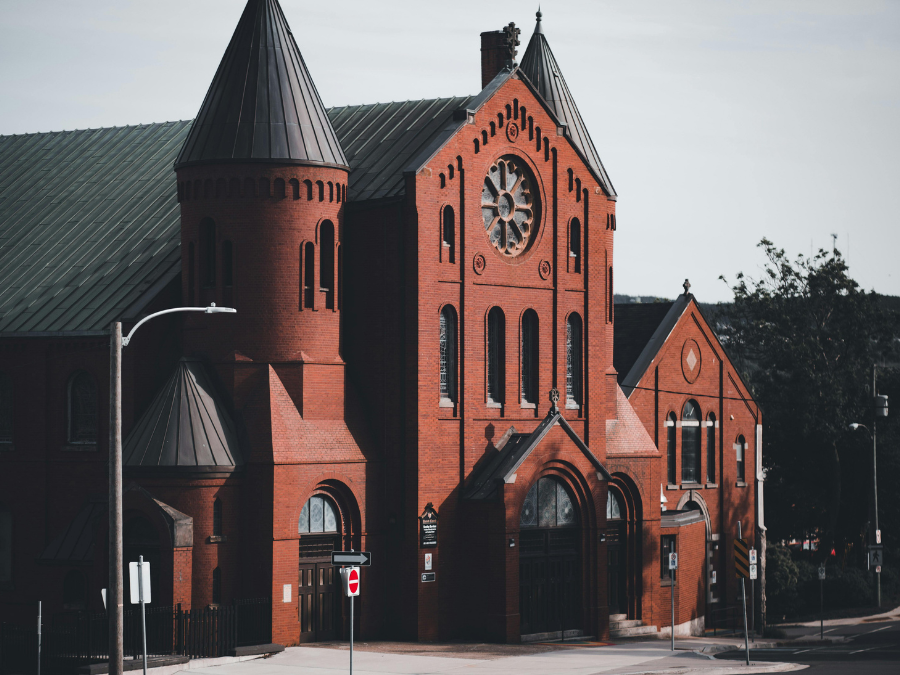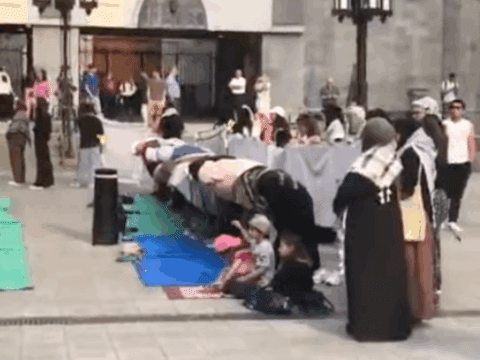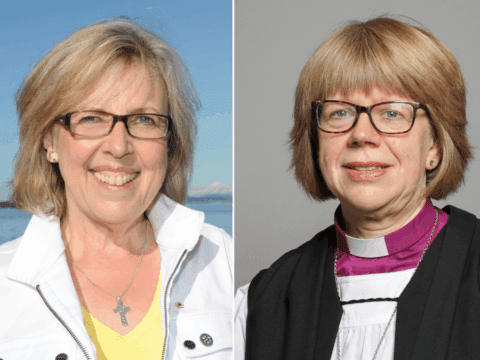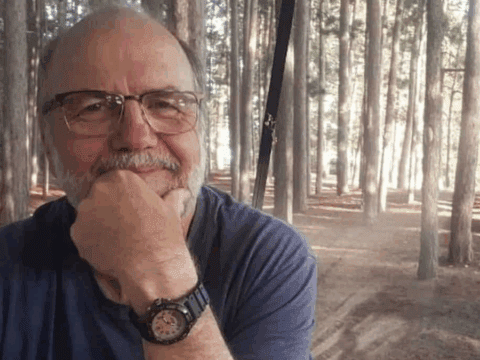It’s no secret that religiosity in Canada is declining — but when faith-based buildings disappear, it’s not just congregations that lose out. Communities do too.
That’s why a new report from the Canadian Urban Institute (CUI) explores the broader social impacts of Canada’s faith-based spaces and calls for them to be re-envisioned as community hubs.
You may unsubscribe from any of our newsletters at any time.
Citing data originally published by the National Trust for Canada, the report notes that nearly a third of the country’s 27,000 faith buildings are expected to close permanently within the next decade. The United Church of Canada, in particular, has seen congregations shutting down at a rate of more than one per week.
Places of worship are considered “third spaces,” community hubs where people gather outside of home and work. Churches host everything from childcare programs to Alcoholics Anonymous meetings, and from community theatre groups to emergency food banks. According to the CUI report, more than 900 non-profit organizations in southern Ontario alone use faith buildings, and 84 percent of them say they have no realistic alternative if those spaces shut down. Nationally, faith buildings account for over 450-million square feet of space, more than 50 times the total floor space of all urban libraries in Canada. Losing these venues would significantly erode the country’s informal social infrastructure.
“I think it’s important to recognize that these buildings have long been used for civic purposes, functions that go beyond worship itself,” says Leandro Santos, author of the report. “If we’re not careful and cognizant of the risks of this loss, we might find our town centres, downtowns and main streets without the services needed to help the most vulnerable members of our society.”
Santos describes faith spaces as “resilience hubs” that can offer support during emergencies and promote overall community strength and preparedness. They can — and often do — provide critical resources such as emergency shelter, climate-controlled environments during extreme weather events, communication hubs and spaces for distributing essential supplies. More importantly, they create space for people to connect — to borrow tools, organize childcare, host community meals and build relationships that can make neighbourhoods stronger and more cohesive.
The report highlights the concept of the “halo effect,” a term that describes the positive impact of faith-based institutions on their surrounding communities. This includes economic contributions, support services and social cohesion. Research from the Halo Calculator — developed by Cardus, a Canadian think tank — estimates that for every dollar a faith group spends, the community receives $3.39 in social benefit, adding up to an estimated $18.2 billion nationally.
“If municipal governments had to recreate the services lost from the closure of churches or faith buildings, it might not be possible without significant transfers from higher orders of government,” Santos says.
More on Broadview:
- The rise of the non-religious in Canada
-
A hitchhiker’s guide to the future of The United Church of Canada
Still, this isn’t just a story about loss. The report lays out solutions too. It calls for faith spaces to be reimagined as multi-use hubs — places that could double as affordable housing, cafés, cultural centres or climate resilience spaces. That would require changing zoning rules, investing real money (for example, through dedicated municipal grants or heritage conservation funds) and getting governments, planners, congregations and community groups to collaborate.
Some churches are already taking this route. In Winnipeg, All Saints Anglican Church partnered with the University of Winnipeg Community Renewal Corporation to turn part of its property into mixed-market affordable housing.
“Nonprofits and charities depend on churches for affordable space. If we do nothing, the real estate market will turn them into condos,” says Rev. Graham Singh of Relèven, an organization working closely with churches to adapt their spaces.
Singh says faith leaders have a responsibility to make sure these buildings keep serving the community, even as their original purpose shifts.
United Church minister Rev. Russell Daye says the social fabric across North America is already under serious strain. “Its fibres are regularly tearing,” he says. The disappearance of thousands of faith communities and third spaces isn’t just a symptom of that crisis, it’s part of the cause. At the same time, Daye believes faith spaces could also be part of the solution.
“It is imperative that governments at all levels respond to this crisis by rethinking development and planning processes that make it so difficult for faith communities to renew their site,” says Daye, who serves Wilmot United in Fredericton, N.B. “The provision of support and co-ordination for faith communities would also be an enlightened use of government resources.”
Organized religion may be fading in Canada, but the civic role of its buildings doesn’t have to. As churches face uncertain futures, what’s really on the line isn’t just tradition or ritual. It’s the neighbourhood hubs that hold communities together.
“There aren’t many places left where you can just exist without having to pay for something or be part of a private space,” says Santos. “Faith buildings are one of the few third spaces we still have — and they’re an opportunity to keep that kind of community space alive.”
***
Paniz Vedavarz is a Broadview summer intern.















I wish this article had gone deeper. The complexities of church building closures are significant. The dynamics of congregational closure and disbanding or amalgamation aside, it is very easy to say that church buildings should keep serving their community. However, that statement ignores the “Yes, but…” factor.
Many church buildings which are closing are over a century old and have suffered from decades of deferred maintenance. They are energy inefficient, not readily accessible or made accessible and are governed by restricting historical and architectural designations which make repurposing complex and expensive.
The suggestion that municipal or heritage funds be used to refurbish churches belies the fact that municipal governments, particularly small municipalities, have few resources, are constrained by provincial policies and laws and have much more significant issues to deal with than putting money into old, expensive buildings. In Ontario, the province removed generous grants to historical buildings decades ago. In an era of competing priorities, it is unlikely to restore those funds.
Since I left active ministry and became a re-engaged pensioner, I have sold, as a Trustee, three church buildings and a manse. One was repurposed as a youth centre held by a non-church, non-profit organization, one was converted to a home and one sits derelict by a highway. The manse was sold into the housing market. I expect this will continue.
There are many options available to congregations and regions with surplus property. Even selling to condo builders adds to the housing market. Looking to government to refurbish community spaces may be a feel good option, but is not the universal solution we think it might be.
Agreed. A lot of churches “rent out” to offset deferred maintenance. So both the community and church need each other to survive.
As well, the article does not mention that these “faith buildings” are offset by former and present congregations (as tax write-offs), allowing them to be rented out cheaper than publicly owned buildings such as libraries. I wonder what will happen when charitable donations are no longer tax deductions?
I’m sure I do not agree with Rev. Singh who says “faith leaders have a responsibility to make sure these buildings keep serving the community, even as their original purpose shifts.” In what way? Is there a suggestion that the church stops its function as a worship centre towards the God it professes just to rent out to Karate, Montessori schools, and drop-in centres?
It breaks my heart to see a lot of historical churches being torn down, revamped as apartments or sold to private entities for promoting cultural lifestyles that go against God’s design. Our forefathers must be turning in their graves to see their investments squandered.
I find it odd, that some denominations are leaving “church” buildings to establish themselves in commercial or industrial complexes. This works in an urban setting, where people now drive to church rather than walk, and when “closing up shop” they are easier to resale, as you don’t need to rezone. As well, churches being built well out of town where it stays away from those to whom they were called to preach to.
Seeing the church as fulfilling a civic role is also part of the problem, its priority should be fulfilling a Theological role foremost. This may be why we are losing the congregation, they have enough civic buildings, but lack the Christian message of hope.
With respect, churches have to charge market rate rents or have their charitable tax status revoked, potentially. There is no “tax write off” possible.
I guess I am misunderstood, not the first time. Churches are built and maintained by donations of the congregation, these are tax deductibles. Therefore, Churches can offset some costs, which allows very competitive renting. Rents are declared and not tax deductible.
I agree with the comments that the article could, and should, have gone deeper into the issues. Ignoring context, details, and the realities of the today’s challenges does not help us but rather risks misdirected and wasteful efforts. That said, it is true that religious buildings do have the potential to be vital community space that is very much needed.
I had a gnawing feeling as to reply to this article or not but have bitten the bullet. . For most of my life I have attended the Anglican Church but during the last ten years I have discovered the UCC (United Church of Canada) where services are a bit more modern. Heck, they even have a creed that is a mere forty years old! But not much of this matters to young people and the older people who have thought things out. We are plied with stories of God as written by fallible human scribes and God and Jesus relationship is explained in a centuries old recitation of The Trinity. No wonder churches are losing members to their congregations.
Young people function by what is believable and older folks have had a lot of time to think about what is believable and what is not.
Belief is a man made concept and is not necessarily true. Lately I have switched from my present UCC to Westhill United Church where people from any faith path will feel comfortable as God and Jesus are rarely if ever mentioned. The church can be reached from anywhere on the earth that has internet. Instead of spending time in our knees (sorry, that’s an Anglican thing!) we dwell on the second great commandment: love your neighbour as yourself. We stress kindness, and filial love for others. This is where disused churches play a big role in feeding the hungry and providing shelter, counselling and discussion. We also discuss and are taught and shown how to care for the planet which is our home.
Do I miss the years I spent in the Anglican Church? Yes, slightly. The music was good and who doesn’t love a parade with colourful vestments!
I’m not sure of your comments. I didn’t care for the “guy in the sky”, my first church was as dry as the Sahara and some thought it radical or a passing fad. Yet, here I am as a follower of Christ. The reason people don’t come to church is we portray ourselves as not believing in our beliefs (faith). If we are constantly changing our doctrines and methodologies to “win them over” we’ll never do it. Our job is to “proclaim the Good News”. The work is done by God, and the onus is on the unbeliever. The Apostle Paul doesn’t leave a pretty picture about the future of man in 2 Timothy 3:1-5 (Although the passage is speaking of Spiritual leaders. The leaders always influence the followers.) Are all doomed?, Shall we quit witnessing?, no, “The steadfast love of the Lord never ceases; his mercies never come to an end.” Lamentations 3:22 But sadly, there will be “many” who will fall away from God’s truth.
The closing of church buildings is to be expected due to the decline of interest